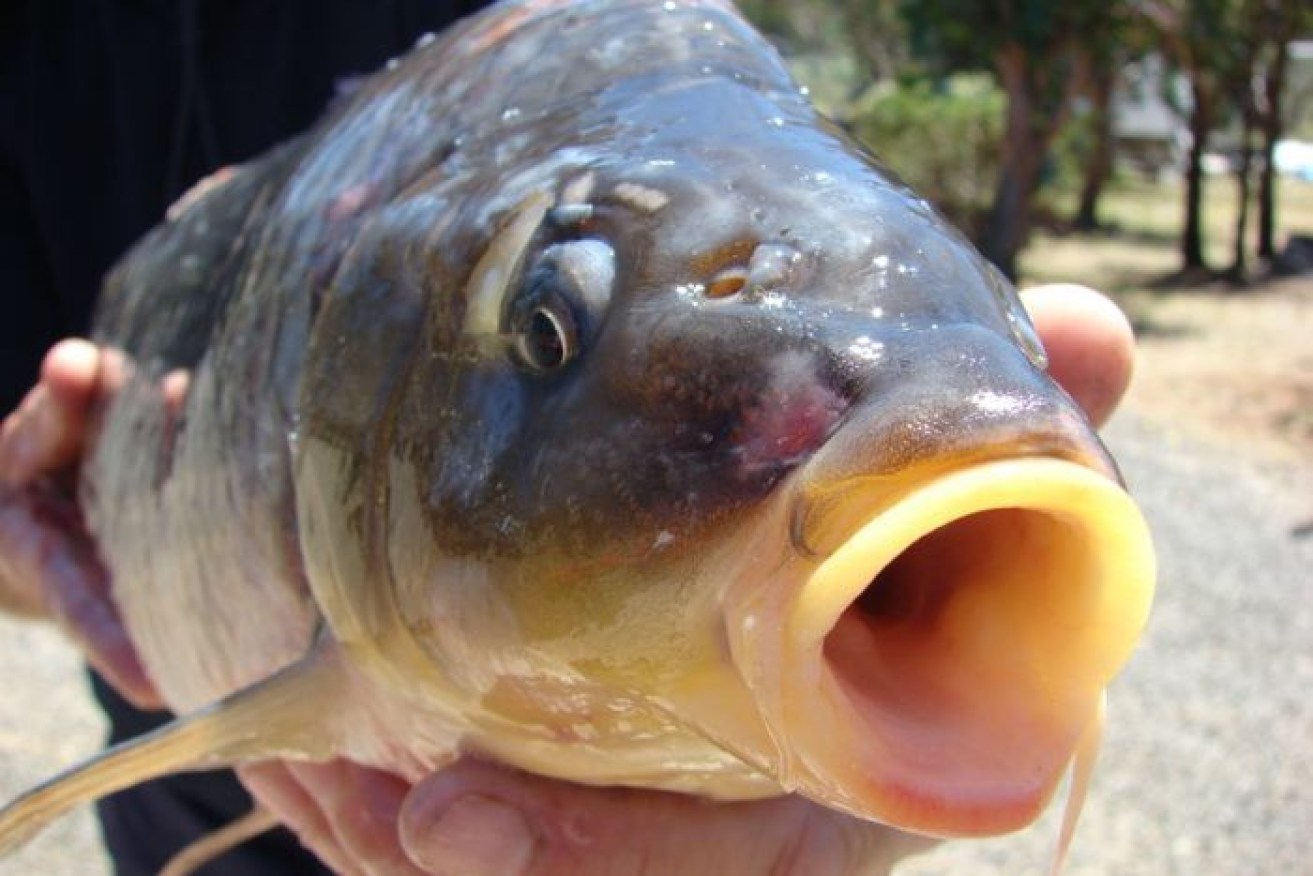Experts concerned after carp survives mass fish kills

Carp have been described as "destructive" and are edging out native species. Photo: ABC
It’s Menindee’s mass fish kill survivor, but no one is celebrating the fact carp are still alive in the Darling River.
In fact, experts are worried the invasive pests are steadily climbing the food chain.
The species of fish was singled out in 2015 during Question Time by Barnaby Joyce, who labelled them “disgusting mud-sucking creatures” and called for their eradication by way of herpes.
But it seems neither the fish kill events in Menindee nor the leader of the National Party’s threat to infect them with a fish virus has curbed their numbers in the Darling River.
While the river’s native species were being decimated by the algal bloom, resulting in oxygen being siphoned from the water, the National Carp Control Plan (NCCP) expected the invasive species would make up a lower percentage of the fish deaths.
“They’re a very successful pest, they’re tougher than a lot of the native fish species … they’re the last fish to die in many of our systems,” NCCP national coordinator Jamie Allnutt said.
He said carp were known to survive extreme temperatures, poor water quality, low oxygen environments and some had been observed going above water for air.
Fisherman Travis Casey, who has lived in Broken Hill for 42 years, said carp had always been problematic but they were kept in check by their natural predator, the Murray cod.
With the cods and their natural food sources, including the bony bream, devastated by the fish kill it has opened the way for the invasive species to take over the local waterways.
“Cod have been the apex predator for 15 years and their numbers were starting to flourish,” Mr Casey said.
You take out the apex predator and the pest fish like the carp will breed really rapidly.”
The NCCP coordinator said carp were a “destructive” and “aggressive” species which, when allowed to thrive, made up 80 per cent of the biomass in many inland water ecosystems.
Mr Casey said when he took his boat down a stretch of the river at the weekend, he did see many “big healthy carp” among the casualties, but knew they were a hardy species.
“They’re going to come back a lot harder than what they have for the last few years,” he said.
The Chairman of the Menindee Tourism Association, Rob Gregory, bemoaned the prospect of the Darling River becoming a “muddy cesspool of carp” and complained the fish were destroying riverbanks.
“There’s only going to be carp left,” Mr Gregory said.
“To get back to how it was … it’s going to take a lifetime. Absolutely no doubt about it.”








